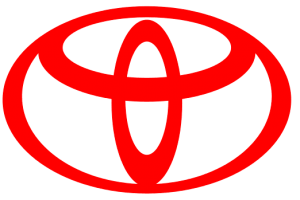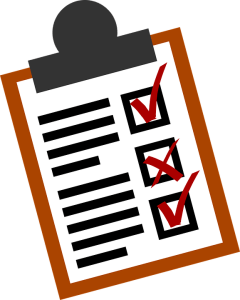 Like most companies, Toyota conducts an annual evaluation of the performance of their employees. Recently I got a chance to look at these evaluation sheets and take notes. There are some surprising differences in the evaluation by Toyota in comparison to the evaluation by most other companies.
Like most companies, Toyota conducts an annual evaluation of the performance of their employees. Recently I got a chance to look at these evaluation sheets and take notes. There are some surprising differences in the evaluation by Toyota in comparison to the evaluation by most other companies.
Introduction
 Toyota evaluates its employees annually. When Toyota reorganized its evaluation system, it was one of the few instances where Toyota sought the help of outside consultants, working with them for three years to come up with this process. I do like the resulting sheets, although (as always) I advise you against simply copying whatever Toyota does. Instead, use this as inspiration for your own evaluation process.
Toyota evaluates its employees annually. When Toyota reorganized its evaluation system, it was one of the few instances where Toyota sought the help of outside consultants, working with them for three years to come up with this process. I do like the resulting sheets, although (as always) I advise you against simply copying whatever Toyota does. Instead, use this as inspiration for your own evaluation process.
At Toyota, an employee up to and including plant manager is measured on twenty different aspects. Actually, the evaluation is done three times. The employee evaluates himself independently of the evaluation of his supervisor. When discussing the evaluations, both have to agree on a joint evaluation, and only this joint evaluation is then used for the promotion of the employee.
These twenty aspects are split into two groups of ten aspects each. The first group is the more important one, with each aspect having up to 10 points. The aspects in the second group can each get a maximum of 5 points. Additional points can be given if the employee completed a training during the previous year.
First Group of Aspects: Genba, Kaizen, Quality
Each skill in the first group is graded on a scale from 0 to 10. The possible options, however, are only 0, 2, 6, and 10, to avoid too much clustering in the neutral, comfortable middle.
- Physical Skills on the Shop Floor: Can the employee handle the work with respect to takt time and quality? This also includes if the worker calls for help without delay if he needs help. Again, please note that this is used even for plant managers, hence plant managers are also evaluated on how well they work with their hands. Although it may very well be that for higher-ups, past evaluations were recycled without verifying if the plant manager still can assemble cars. However, since every person at Toyota starts out with a few months of assembling cars, the plant manager at Toyota probably knows the work better than most comparable plant managers in Europe and the USA.
- Quality on the Shop Floor: Can the employee maintain quality? Does he see if the quality differs? Is his hand movement suitable for quality? Again, even the plant manager is evaluated on this.
- Kaizen: Is the employee actively involved in the continuous improvement process (kaizen)? Does he generate ideas and are these useful?
- Documentation: Is the employee good at documentation? Does he know the documentation sheets, and does he fill them out properly? Toyota uses many sheets to track quality, productivity, safety, kaizen, and other things, and almost all of these sheets are filled out by the employees by hand to be verified and commented on by the managers, also by hand.
- Big Picture View: Does the employee know how the targets for his work are derived from the higher level targets? How do his targets contribute to the higher-level targets?
- Leadership: Can the employee make the most out of the different skills of his team? Can he help his subordinates and his team to grow? Can he help to foster the generation of improvement ideas?
- Problem Solving: Is the employee good at problem solving? Does he contribute to quality circles, etc.?
- Cooperation with Support: Does the employee work together well with support functions that help him in his work?
- Cooperation with Management: Does the employee work together well with management?
- Outside-the-Box Thinking: Does the employee look beyond the scope of his own assignments? Does he get ideas from outside of his own workplace? Is he interested in or aware of benchmarks? Does he read news or articles (e.g., on IT, robotics, or other topics)?
Second Group of Aspects: Performance, Behavior
The ten aspects in the second group rank lower than in the first group. While the aspects in the first group could get up to 10 points each, the second group has a maximum of 5 points for each aspect. These, too, are not evenly distributed, but can be 0, 1, 3, or 5, again avoiding the comfortable middle ground. These ten criteria are:
- Performance: Can the employee reach his targets?
- Teamwork: Is the employee a good team worker? Does he cooperate with others? This also includes if he is satisfied with his job or if he is here just for the money.
- Manners: Is the employee well behaved, and does he interact properly with others?
- Self-Awareness: Is the employee self-aware of his personal development? Is he aware of his contributions? Does he evaluate himself regularly, and has he the ability for self-reflection?
- Health: Does the employee get regular health check-ups? Does he do sports or exercise on or off the job?
- Forward Looking: Is the employee looking forward and eager for new experiences, or is he complaining and stuck in previous grievances?
- Focus: Can the employee focus? Can he separate the important from the unimportant? Does he understand the essence of problems and focus on the correct things?
- Unbiased: Can the employee keep his personal feelings separate from the factual aspects? Do his personal dis-/affections impact his evaluation of others?
- Wide View (literally “wide eyes”): Does the employee get ideas and inspiration from outside of Toyota?
- Team Organization: Can the employee organize a team? Can he lead a team, or does he just want to be a member?
Joint Results
Altogether, the employee can get up to 150 points, plus additional points for completed trainings. This determines the maximum rank he can achieve within Toyota.
Toyota has different salary levels, ranking up from Level D-VIII for the common worker up through C, B, and eventually A1. For a promotion, the employee has to achieve both a minimum number of points in his evaluation, as well as a minimum number of points on certain questions in the evaluation. For example, if you cannot work well on the shop floor, you will never make it to plant manager, even with a perfect score on all other aspects and exceeding the required minimum of 130 points.
A raise in the ranking corresponds with an increase in salary. However, a worker cannot move up more than two levels every year. It still takes time to move up, and it usually takes ten to fifteen years to become a supervisor, and fifteen to twenty years to become a group leader.
Summary
Like in most companies, some employees see this system as a challenge, whereas others see it as a drag. Usually, the employees that do well like it, and those that don’t, don’t.
What struck me as surprising is the value Toyota puts on working with your hands, on continuous improvement, and on teamwork. Elsewhere, I have never seen an employee being evaluated on how well he fills out forms, nor on his ability to assemble products. Again, this system is used up to the level of plant managers! There are a lot of surprises in this system, but to me these are good surprises! I don’t know if this evaluation only affects promotion (and hence salary) or also the bonus.
Regarding bonuses, I do like the Bosch way. Bosch recently scrapped its performance-based salary bonus, and bases the bonus only on the performance of the division and company overall. This avoids a lot of bad blood if the employee sees himself better than the manager does (a common problem, as you surely know).
Anyway, I hope this post helped you to improve your “out-of-the-box thinking” score 🙂 . Now, go out, think a bit more outside of the box, and organize your industry!
PS: Before you ask: No, I don’t have a copy of the documents, only my own notes. Sorry! But I do recommend the C2U Lean Leadership Training in Japan, at which I saw this Toyota employee evaluation form (and learned also many other things on Toyota).

Good read.
Any relevant data for large (not Toyota size), medium and small companies???
Hi Loray, sorry, I don’t have examples of other companies that I can share. Most of what i have is proprietary, but most of it is also only standard stuff like most other companies. Toyota has some nifty stuff that is different from the rest for its evaluation.
christoph,
Great article, I really appreciate the more Toyota Way/Lean Leadership articles.
At Toyota Europe we used the KPPI 3 part index, for evaluating employees, we also linked this to monthly appraisals, but the KPPI was the main tool. it seems what you are writing is what you saw but probably arranged in a way to suit more Japanese expectations.
Many thanks, Mark! Happy New Year!
Have you seen the approach by Deloitte’s?
Hi Jose, no, not yet. But after your suggestion i found a Harvard Business Review Article on that topic: Reinventing Performance Management. Interesting. It sounds also good. Thanks for the input!
Great , This article I took for our project topic on performance appraisal.
Thank you
Glad it helped, Mohamed 🙂
good one, Great lesson, i grasped many points from this article.
Great article and insight – thank you!
James
A significant departure from the teachings of Deming. Any idea when they started doing performance appraisals?
Hi Samer, to my knowledge this process is pretty recent within the last 5 years. Not sure when they departed from Deming.
Valuable information; thanks for sharing. Do you have more insights about the compensation system(s)? Base rate + bonus? linked to individual/team performance? to actual vs plan output?
Thanks
Hi Charles, sorry, I don’t have details on the compensation.
Performance and reward management:
• How to measure performance – output and behaviour. Identify some performance measures. Potential benefits of performance measurement and assessment.
• Performance appraisal: types of performance appraisal. Aims and objectives – control versus development. How (output and behaviour) and Who (method).
• Total Rewards – types of reward (intrinsic and extrinsic, financial and non- financial) and link to HRD and performance appraisal.
• Overview of relevant content and process theories on motivation within the context of total reward.
• Relationship between motivation theories, types of reward and employee commitment, involvement and performance. [i need those information at toyota]